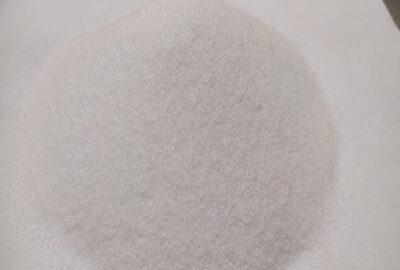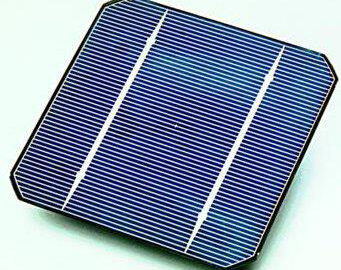Quartz Grits & Powder
- Quartz is a naturally occurring mineral composed of silicon and oxygen atoms, with the chemical formula SiO₂. It is one of the most abundant minerals in the Earth’s crust and has a crystalline structure that can form in a variety of shapes and colors.
- Quartz lumps refer to large, naturally occurring pieces of quartz that are extracted from mines. These lumps are usually raw, unprocessed, and come in various sizes, typically ranging from a few centimeters to several meters in diameter. Quartz lumps are often used as raw materials in the manufacturing of quartz-based products such as quartz countertops, glass, ceramics, and even in the production of silicon metal.
- Quartz refers to a specific chemical compound (silicon dioxide, or silica, SiO 2 ), having a specific crystalline form (hexagonal). It is found is all forms of rock: igneous, metamorphic and sedimentary. Quartz is physically and chemically resistant to weathering.
- Quartz is one of the hardest yet abundantly available mineral found in earth’s crust. In contrast to its ease of availability, It is quite valuable. We, At Unique Crystal Minerals always try to implement best and advanced techniques to provide high quality quartz products in India.
- The scientific composition is silicon and oxygen atoms in a continuous atom being co-valently shared between two tetrahedra, giving an overall chemical formula of SiO2.
Images for Reference
| S.No | Sieve Size | PAN | 0.105 mm | 0.212 mm | 0.3 mm | 0.425 mm | 0.6 mm |
|---|---|---|---|---|---|---|---|
| 1 | Retained Wt | 2 | 23 | 33 | 40 | 2 | NIL |
| 2 | Retained % | 2 | 23 | 33 | 40 | 2 | NIL |
| 3 | Passing % | NIL | 2 | 25 | 58 | 98 | 100 |
| Whiteness Analysis Data | |||||||
| 4 | Grade | L | A | B | WI | ||
| 5 | Premium | 93.36 | 0.34 | 1.22 | 87.99 | ||
| 6 | Supreme | 93.33 | 0.45 | 1.86 | 86.14 |
| S.No | Sieve Size | PAN | 0.3 mm | 0.425 mm | 0.6 mm | 0.71 mm | 1 mm |
|---|---|---|---|---|---|---|---|
| 1 | Retained Wt | 2 | 8 | 12 | 74 | 4 | NIL |
| 2 | Retained % | 2 | 8 | 12 | 74 | 4 | NIL |
| 3 | Passing % | NIL | 2 | 10 | 22 | 96 | 100 |
| Whiteness Analysis Data | |||||||
| 4 | Grade | L | A | B | WI | ||
| 5 | Premium | 89.6 | 0.39 | 1.35 | 83.02 | ||
| 6 | Supreme | 88.9 | 0.48 | 1.41 | 82.07 |
| S.No | Sieve Size | PAN | 0.6 mm | 0.71 mm | 1.18 mm | 1.6 mm |
|---|---|---|---|---|---|---|
| 1 | Retained Wt | 4 | 3 | 86 | 7 | NIL |
| 2 | Retained % | 4 | 3 | 86 | 7 | NIL |
| 3 | Passing % | NIL | 4 | 7 | 93 | 100 |
| Whiteness Analysis Data | ||||||
| 4 | Grade | L | A | B | WI | |
| 5 | Premium | 93.36 | 0.34 | 1.22 | 87.99 | |
| 6 | Supreme | 93.33 | 0.45 | 1.86 | 86.14 |
| S.No | PAN | 1.18 mm | 2.36 mm | 2.8 mm | |
|---|---|---|---|---|---|
| 1 | Retained Wt | 4 | 94 | 2 | Nil |
| 2 | Retained % | 4 | 94 | 2 | Nil |
| 3 | Passing % | Nil | 4 | 98 | 100 |
| S.No | PAN | 2.36 mm | 4.0 mm | |
|---|---|---|---|---|
| 1 | Retained Wt | 7 | 87 | 6 |
| 2 | Retained % | 7 | 87 | 6 |
| 3 | Passing % | Nil | 7 | 94 |
| S.No | PAN | 4.00 mm | 6.3 mm | |
|---|---|---|---|---|
| 1 | Retained Wt | 11 | 89 | Nil |
| 2 | Retained % | 11 | 89 | Nil |
| 3 | Passing % | Nil | 11 | 100 |
| S.No | Material Size | Grade | Particle Size Analysis | Contamination Analysis | Whiteness Analysis |
|---|---|---|---|---|---|
| 1 | Quartz Grits 0.1 to 0.4 MM | A Grade & M Grade | Dry Sieve | Visual Checking | Spectrophotometry |
| 2 | Quartz Grits 0.3 to 0.7 MM | A Grade & M Grade | Dry Sieve | Visual Checking | Spectrophotometry |
| 3 | Quartz Grits 0.6 to 1.2 MM | A Grade & M Grade | Dry Sieve | Visual Checking | Spectrophotometry |
| 4 | QQuartz Grits 1.2 to 2.5 MM | A Grade & M Grade | Dry Sieve | Visual Checking | Spectrophotometry |
| 5 | Quartz Grits 2.5 to 4.0 MM | A Grade & M Grade | Dry Sieve | Visual Checking | Spectrophotometry |
| 6 | Quartz Grits 4.0 to 6.0 Mm | A Grade & M Grade | Dry Sieve | Visual Checking | Spectrophotometry |
| 7 | Quartz Powder 100 Mesh | A Grade & M Grade | Dry Sieve | Visual Checking | Spectrophotometry |
| 8 | Quartz Powder 200 Mesh | A Grade & M Grade | Dry Sieve | Visual Checking | Spectrophotometry |
| 9 | Quartz Powder 300 Mesh | A Grade & M Grade | Dry Sieve | Visual Checking | Spectrophotometry |
| 10 | Quartz Powder 400 Mesh | A Grade & M Grade | Dry Sieve | Visual Checking | Spectrophotometry |
| 11 | DCF 450 Fines | - | - | - | - |
| 12 | DCF 350 Fines | - | - | - | - |

















